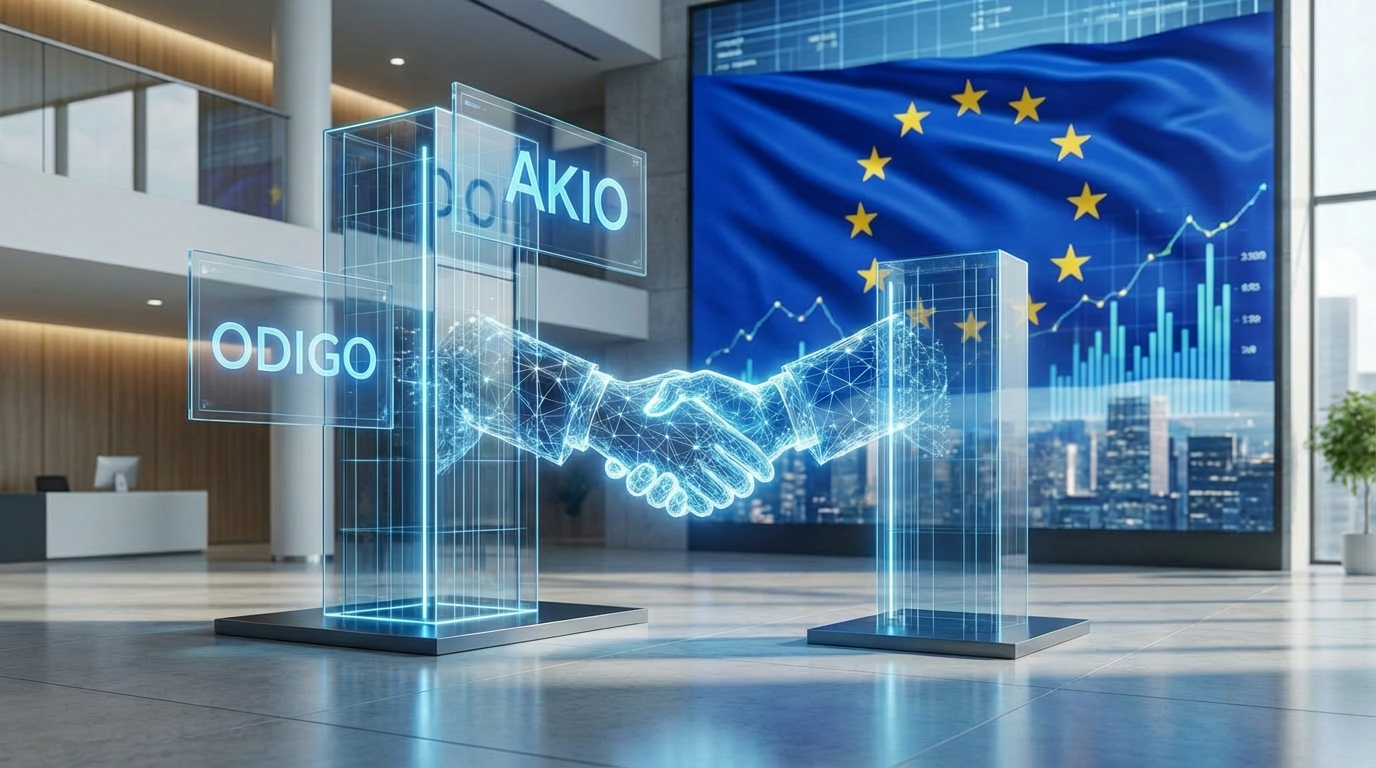“Your brand is not what you sell; it’s the experience you deliver.”
That’s a frequently cited quote from Tony Hsieh, the former CEO of Zappos.
Zappos is an online clothing retailer, and – in that sector – this statement shines true.
After all, retailers sell commodities. Therefore, CX is the chief brand differentiator.
Given this, retail contact centers can play a significant role in making or breaking customer loyalty.
Yet, retailers face unique challenges and have different priorities. As such, new trends are rising across the sector.
Here are four excellent examples for the retail contact center to keep top of mind.
1. Competitor Analytics Enables Differentiation
Compared to other industries, retailers place significant emphasis on understanding and outperforming the competition.
Indeed, according to ContactBabel research, managing competition and increasing sales are the two top priorities for retail contact centers in 2025.
On a practical level, tackling competition involves gathering competitive intelligence from multiple sources, according to Steve Morrell, MD of ContactBabel.
Nowadays, that involves funneling data from multiple sources—including customer conversations, third-party review sites, and social media platforms like Reddit, WhatsApp, and X. Morrell added:
“AI-enabled analytics can help identify competitive mentions by listening for company names, product names, sentiment analysis, pricing comparisons, and product reviews.”
By consolidating these insights, AI can support agents in real time, offering prompts, proactive talking points, and even rebuttals to help them better position the brand during customer conversations.
Additionally, businesses can explore dynamic pricing strategies to help agents make informed pricing decisions without compromising profitability.
“I like to think of it as elevating the agent’s role to that of a personal shopper,” observed Jason Griffin, Principal Solution Consultant at Five9.
“By leveraging additional customer insights into buying trends, communication preferences, and past interactions, agents can personalize experiences and build relationships. That’s how you differentiate yourself from competitors.”
Of course, every CX function collects customer data, but the key is to use it effectively. The Five9 Data Lake enables seamless data integration through an open API connectivity layer.
Ultimately, that allows businesses to consolidate data from various sources, extract relevant insights, and present them to agents in real time.
2. Younger Customers Require More Careful Management
Younger customers (ages 16-24) are four times more likely than those aged 65+ to switch retailers due to a poor customer experience, as per ContactBabel.
That challenge is particularly acute in this sector, as retailers already struggle with customer loyalty due to the commoditized nature of their products.
Morrell engaged with many younger consumers to uncover a potential remedy. He found that they most valued long service hours and friendly agents.
On the latter, the analyst was shocked to find that this was more important to younger customers than first contact resolution (FCR) and short wait times.
He hypothesized: “Younger customers are less experienced in calling businesses and often feel stressed about doing so. When they do call, it’s usually a last resort, and they need reassurance.”
“When a retailer can identify a young caller, agents should be especially patient, empathetic, and supportive. These moments of truth can be an opportunity to build long-term loyalty.”
Data is again a critical factor here. If agents can access customer history and preferences, they can tailor interactions accordingly.
For example, if a customer rarely calls but suddenly does, that’s a red flag. It signals a serious issue.
Businesses can prioritize such calls with the right data, ensuring a faster response time and a more personalized approach.
Griffin also reflected on Morrell’s remark that younger customers are typically more hesitant to call businesses. “It highlights the importance of offering multiple communication channels,” he noted.
“While voice remains dominant, its prominence is waning among younger generations who prefer WhatsApp or live chat.
“Having a flexible platform that supports multiple communication channels is key,” concluded Griffin. “Businesses must adapt to customer preferences by providing seamless omnichannel experiences.”
3. Slim Service Operations Are In Vogue
Profitability is a core challenge in retail, where companies typically operate on tight margins.
For perspective, the retail sector pays only 94 percent of the average contact center wage. The only vertical paying less is outsourcing.
With these lower wages, adding headcount is often tricky. It can also cut margins even finer. So, retailers are instead exploring how to increase their profitability per contact.
The answer? Either generate more sales per call or reduce call duration.
As such, contact center leaders must consider how they can remove non-sales-related elements from calls, as per Morrell. He said:
“Authentication, for instance, is a huge time sink. 70 percent of retail calls require caller authentication, which takes an average of 36 seconds. That’s 10 percent of the call spent just verifying identity. If we can use AI agents for authentication and routing, we eliminate a major cost driver.”
“Another possibility is streamlining the agent experience by pulling relevant information into a unified agent desktop, auto-filling forms, and generating post-call notes. “Post-call work alone takes up 15 percent of the time,” added Morrell.
On the sales side, AI-powered analytics can again help agents with cross-selling, upselling, handling objections, and suggesting product comparisons in real time.
Yet, also consider analytics applications beyond agent assist, like the Five9 AI Insights solution. It listens to calls, analyzes intents, and maps them against operational data—hold time, queue time, wrap-up time, and total handle time.
“This helps pinpoint problem areas,” said Griffin. “For example, if agents frequently put customers on hold, we can improve guidance. If queue times are high, we look at virtual assistants to handle basic queries like authentication or order updates.”
By focusing on these critical improvement areas, retail contact centers can reduce inefficiencies while increasing revenue opportunities.
4. Retailers Rethink Digital Service Experiences
Retailers have already shifted many queries away from voice, with – on average – only half of their contact center conversations happening on the channel.
However, 28 percent of their calls still come from customers who tried and failed to resolve their issue via self-service, according to ContactBabel’s research. That indicates widespread issues within the digital service experience.
Morrell points the finger at previous-generation virtual agents. “Many current chatbots are rule-based and lack sophistication,” he said. “We’ve seen a slowdown in automation adoption because these systems have hit their limits. More advanced AI-driven automation is needed.”
“That said, automation has already made a difference. Since 2018, due to automation, live chat costs have dropped to 55 percent of a live call. But, without a step-change in chatbot sophistication and integration with backend systems, further cost reductions will be limited.”
Generative AI (GenAI) has enabled that step change. Augmented with GenAI, chatbots scour knowledge and data sources to independently answer customer queries without prior training.
Moreover, they gauge changing intents to guide customers through a conversation and – when there is insufficient knowledge – escalate the interaction.
Now, agentic AI promises to take the technology further, connecting with backend processes to automate much more complex queries.
Additionally, it adds reasoning. So, the customer only receives a response if the solution is a specific percentage sure it knows the answer.
With solutions like the Five9 AI Agent, contact centers can toggle that percentage across intents to maximize the efficiency of their deployment and ensure brand safety.
“Many chatbots are just glorified “press one, press two” systems. To be effective, they need to be truly conversational and contextual,” summarized Griffin. “That’s what we’re focusing on with the Five9 AI Agent.”
More Insight Into the Retail Contact Center
Understanding these trends is one thing. Building the retail contact center of tomorrow is another.
Thankfully, Morrell and Griffin took part in a recent webinar, getting more into the weeds and unfurling how retailers can elevate their customer service experiences.
In doing so, they share practical advice to leverage data-driven insights, personalize interactions at scale, and optimize the customer journey.
Catch up on the webinar here: Elevating Retail CX with AI: Driving Personalization & Loyalty Across the Customer Journey







